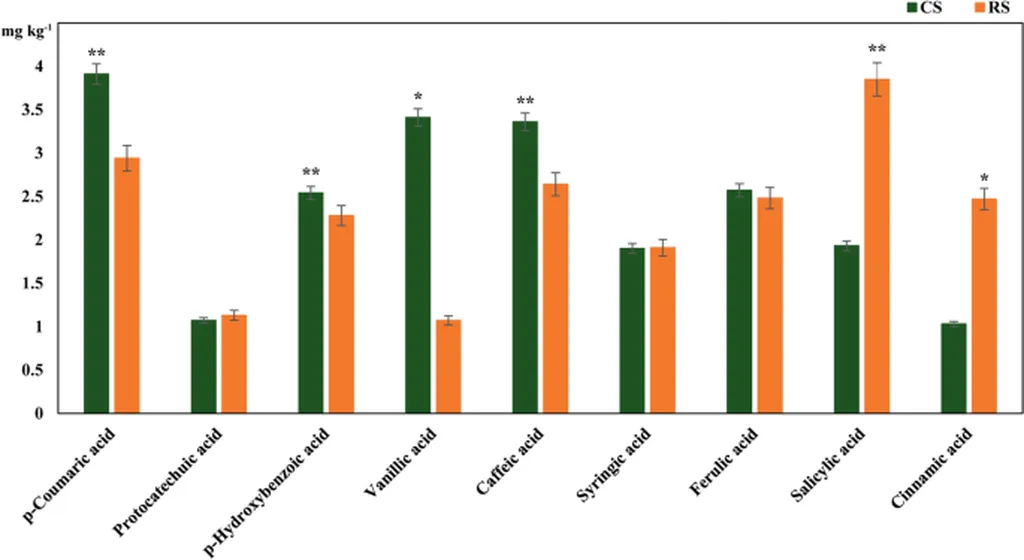In the heart of modern agriculture, a silent battle rages beneath our feet. The challenge? Continuous cropping obstacles (CCOs), a pervasive issue that stifles plant growth and soil health. A recent study published in *Frontiers in Microbiology* sheds new light on this problem, focusing on Panax quinquefolius L., a valuable medicinal plant. The research, led by Jian Song from the College of Life Sciences at Dezhou University, offers insights that could reshape our approach to sustainable agriculture.
The study investigated the effects of continuous cropping on soil properties, microbial communities, and metabolite profiles in Panax quinquefolius fields. The findings are stark: as the number of continuous cropping years increased, soil pH, cation exchange capacity, organic matter, total nitrogen, and ammonium content all significantly decreased. “The decline in these key soil properties is a clear indicator of reduced soil fertility,” Song explains. “This, in turn, hampers the growth of Panax quinquefolius and other crops.”
The impact on soil microbial communities is equally concerning. While bacterial diversity increased, the richness and number of beneficial microorganisms decreased. Pathogenic microorganisms, on the other hand, thrived. “The shift in microbial biomarkers from beneficial to harmful bacteria is a red flag,” Song notes. “It’s a clear sign of soil health decline and increased risk of soil-borne diseases.”
The study also revealed significant changes in metabolite profiles. With continuous cropping, there was a decrease in lipids and lipid-like molecules, and an increase in organic acids, derivatives, phenylpropanoids, and polyketides. These changes, coupled with reduced soil enzymatic activity, paint a grim picture of soil health under continuous cropping.
The commercial implications for the agriculture sector are substantial. Continuous cropping is a common practice in many farming systems, driven by the need for high yields and profitability. However, the long-term effects on soil health and crop productivity can be devastating. “Our findings underscore the need for sustainable agricultural practices,” Song emphasizes. “Crop rotation and soil amendments can help mitigate these adverse effects and improve the long-term viability of Panax quinquefolius cultivation and other crops.”
The research also opens up new avenues for future developments. Understanding the microecological mechanisms of CCOs can aid in controlling pathogenic bacteria and maintaining soil health. It can also pave the way for developing targeted soil amendments and microbial inoculants to improve soil fertility and crop productivity.
In the face of climate change and increasing food demand, the need for sustainable agriculture has never been more urgent. This study serves as a wake-up call, highlighting the importance of soil health and the need for practices that promote it. As we strive to feed the world, let’s not forget the ground beneath our feet. After all, healthy soil is the foundation of a healthy food system.

